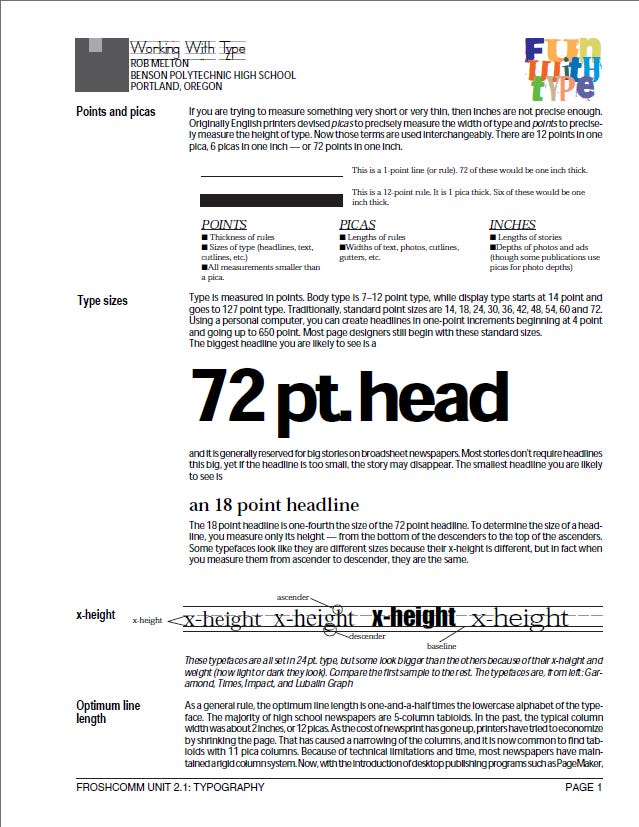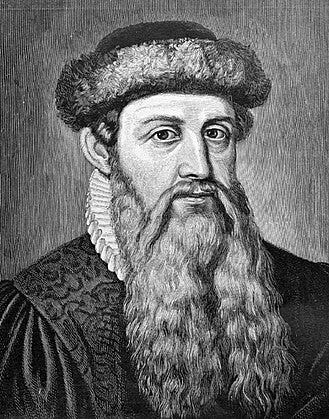New to typography? Here is what you need to know to be a pro in 6 pages
Download it free for personal use
In six pages, “The Elements of Typography” shows you everything you need to know about typography to get started. Calligraphy — beautiful lettering — is part of the art world, and still has a place in publishing.
The part that takes practice is making samples of blocks of types until it looks perfect — a judgment of the eye — which for one of my early student publications involved dozens of minor variations.
These “Elements of …” are also available to use with your students. You may use the documents as a PDF, or you may revise and share them as you wish. They have worked well for many different types of learners.
The originals are in Microsoft Word format which I can’t attach as a document in Substack, and a lot of the formatting was lost when I tried pasting it into Substack as text, so I’d rather attach it this way.
Typography is what helps you create text that just looks right — not to big, not too small, not to little white space, not too much. But it is much more detailed than that.
Although this is for print, it is also about digital use of type. Type, after all is part of the design of any text-based media. But how do you decide what the look and feel of your media should be? How much text, how much art, how much white space?
Before you even play with type and art and color, you need to invent a personality for your publication. The best way to do that is to brainstorm a list of 3-5 words that describe the finished personality of the finished product.
Then generate a number of potential designs and play with the elements until you meet the vision of the 3-5 words. This may seem strange at first, but rest assured that my high school journalism students used this strategy to shorten the design time needed to achieve the final result — begin with the end in mind.
This was one of the strategies that led to winning numerous national awards.
A group of high school students eventually used this idea to create the first advertising agency for online content in Portland, Oregon. They showed me how they based the business on ideas I had taught then and, you guessed it, it was the 3-5 words.
So quick historical recap from Wikipedia:
Johannes Gutenburg was a German inventor and craftsman who invented the movable-type printing press. Though movable type was already in use in East Asia, Gutenberg's invention of the printing press was much faster than scribes recopying texts.
His many contributions to printing include the invention of a process for mass-producing movable type; the use of oil-based ink for printing books ;adjustable molds; mechanical movable type; and the invention of a wooden printing press similar to the agricultural screw presses of the period.Comments, questions, below.
Elements of Narrative: The 5P's
This teacher-created overview of the elements of narrative makes it ideal for teaching students how to identify each of the five elements a writer has chosen to use for a given work, whether fiction or nonfiction. Each of the readings has a quiz and an activity (aka “test”) to demonstrate they have mastered the content of this handout. Then there is a w…
Elements of Poetry
Units of study are organized around genres, so of course each unit begins with a reading and a quiz about the breadth and depth of the genre. I’ve been fortunate to have found documents that served this purpose well, as well as receiving permission and support to use and adapt it in my classroom. When I haven’t found such documents, I…
Elements of film
Based on the book by John Golden as well as a workshop for PPS educators he presented at Grant H.S., Portland, Ore.








